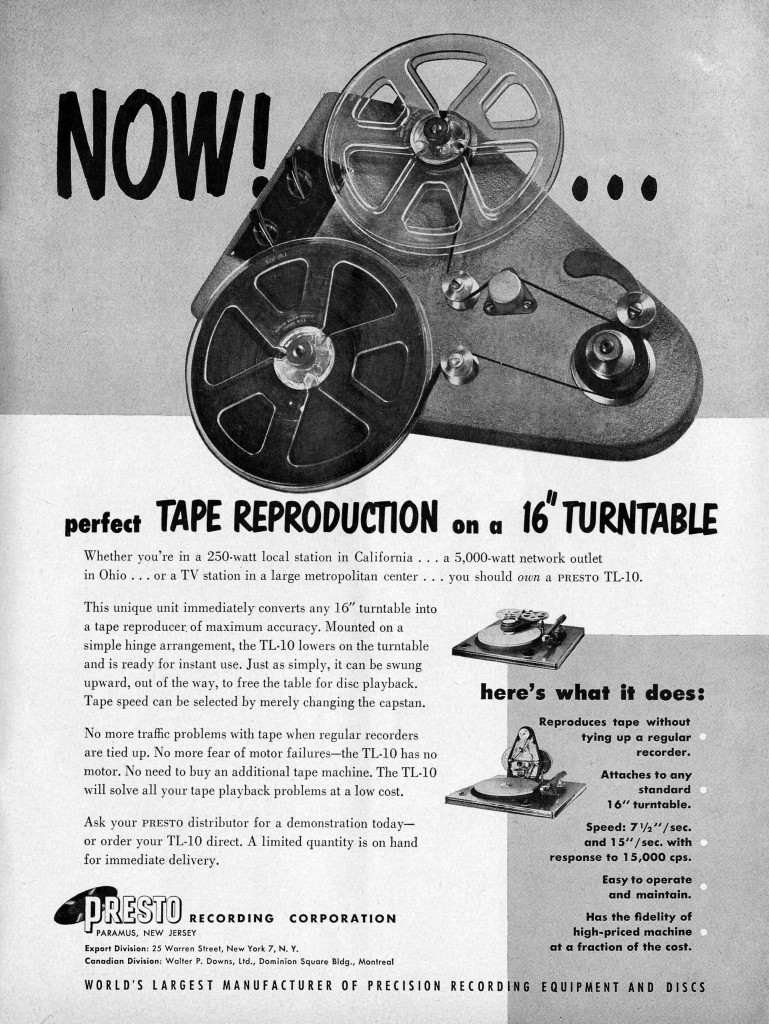 From the pages of AUDIO ENGINEERING, ’52: the Presto TL-10.
From the pages of AUDIO ENGINEERING, ’52: the Presto TL-10.
Next in this series: Turn your tape machine into a CD Player! Followed by… oh shit then it’s the end of physical recorded music media.
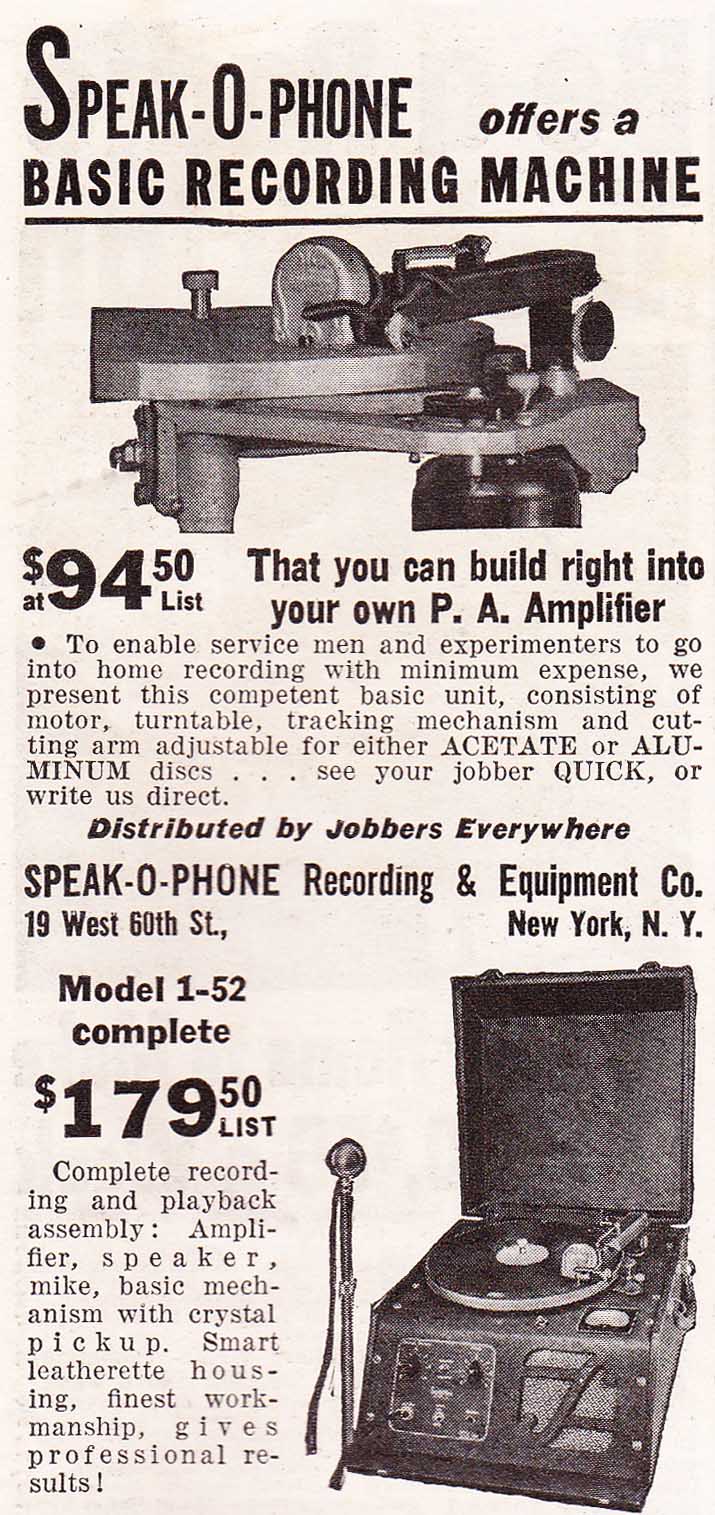 Records on Acetate or Aluminum discs! Click here for more info on this early recording service/hardware manufacturer.
Records on Acetate or Aluminum discs! Click here for more info on this early recording service/hardware manufacturer.
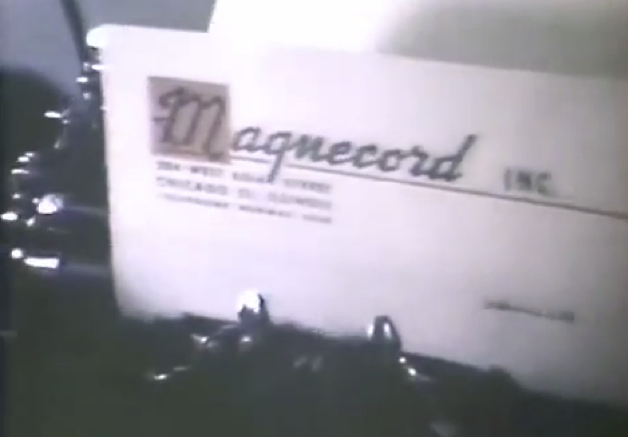 Thanks to H. Layer: A never-before-available Magnecord, INC factory-film circ 1955 (???) is now available on YouTube. These are the people that built the machines that powered broadcast tape-recording on the 1950s.
Thanks to H. Layer: A never-before-available Magnecord, INC factory-film circ 1955 (???) is now available on YouTube. These are the people that built the machines that powered broadcast tape-recording on the 1950s.
Click here to see the video on YouTube
Loads more Magnecord INC history and related information on PS dot com… just click here!
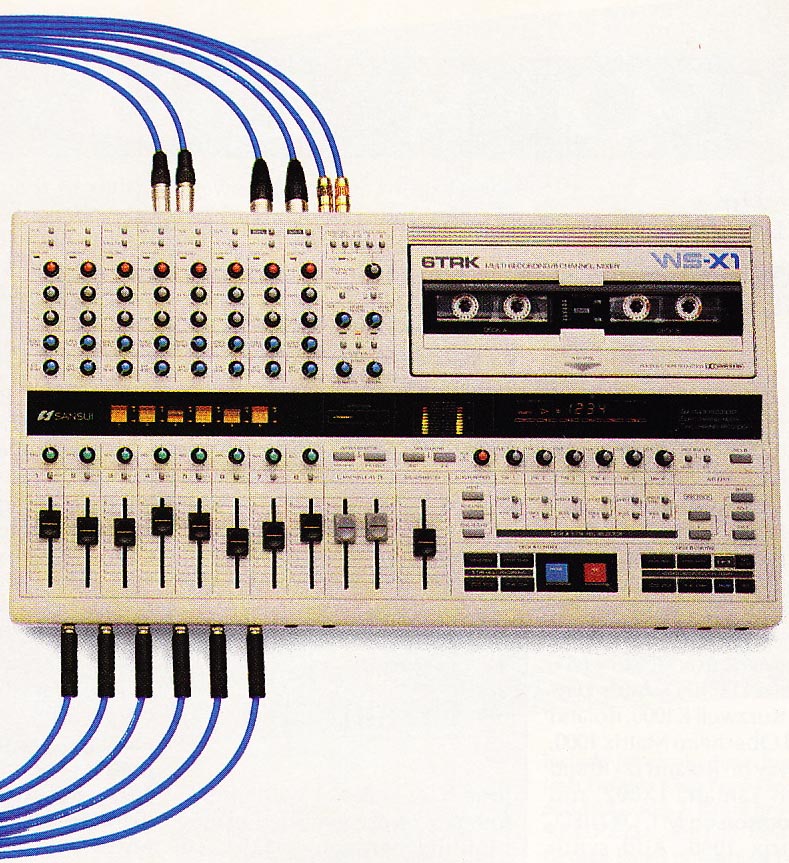 Sansui six-track cassette format c. 1989
Sansui six-track cassette format c. 1989
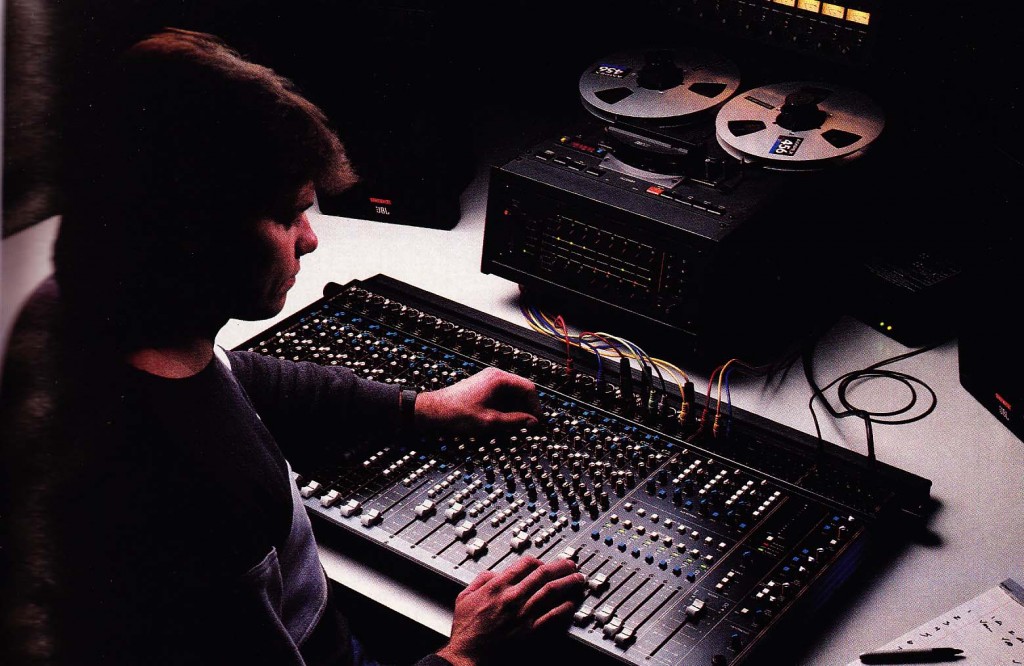 Otari Compact 8-track 1/2″ format c. 1989. Also, SECK mixer.
Otari Compact 8-track 1/2″ format c. 1989. Also, SECK mixer.
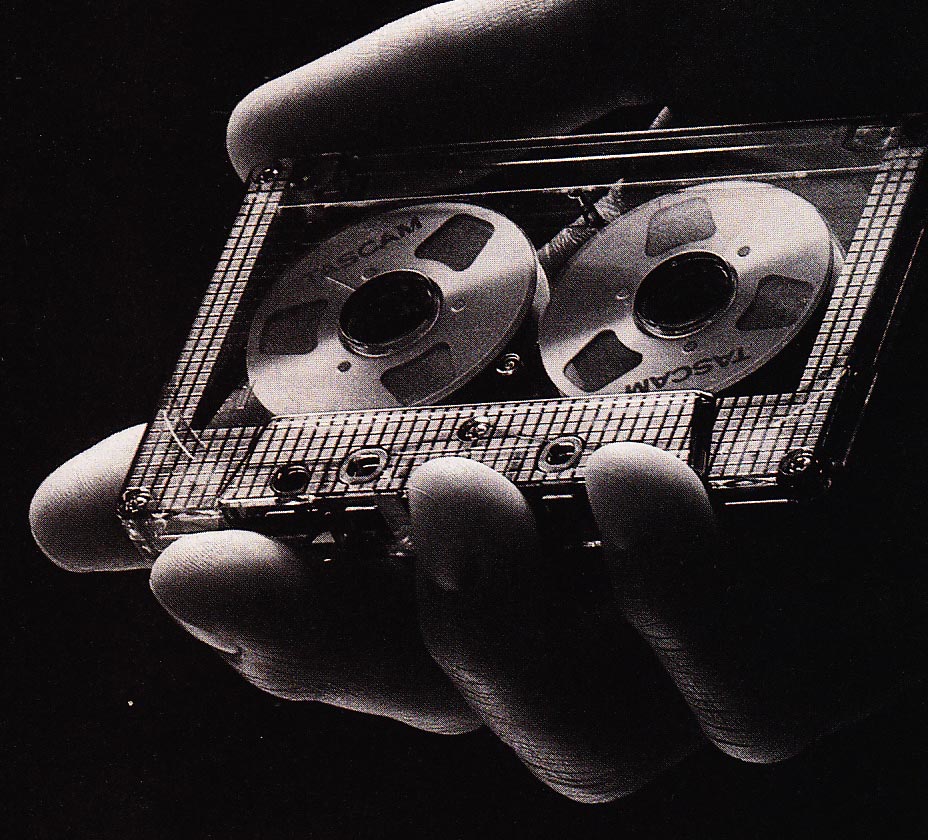 …and you better bet TASCAM made one too.
…and you better bet TASCAM made one too.
Above: some short-lived “more-than-four” home-recording formats that were available between the 4-track cassette and ADAT eras. It’s kind hard to imagine how significant an issue ‘track count’ (IE., the number of available tracks of a particular multi-track recording machine) was just a short while ago. It’s not unusual at all these days for me to make a production for an artist that has 80 or even 100 tracks. And I am not talking about some crazy orchestral or prog-rock epic; I am talking about just a well-produced indie pop song. Modern music means layering. Lots of it. When I, and many other folks started doing this, we dreamed of someday having more than 8 tracks to work with. Well, as it turns out, ‘more’ didn’t mean 16, 24, or even 48: it meant infinite. “Be careful what you wish for…”
What will be the next technological barrier to fall in the world of audio production?
I wouldn’t mind seeing all those goddamn wires go away, for one…
Any other ideas?
 Although I don’t necessarily agree with super-aggressive enforcement of certain copyright laws, OR the fact that she tried to sue one of my favorite recording-artists after he released an affectionate tribute-song about her, I don’t want anyone to think that I am hating on Wendy Carlos. Given the remarkable and really uncanny life of this great composer, who can really judge? Pictured above: Carlos with cats and synthesizers.
Although I don’t necessarily agree with super-aggressive enforcement of certain copyright laws, OR the fact that she tried to sue one of my favorite recording-artists after he released an affectionate tribute-song about her, I don’t want anyone to think that I am hating on Wendy Carlos. Given the remarkable and really uncanny life of this great composer, who can really judge? Pictured above: Carlos with cats and synthesizers.
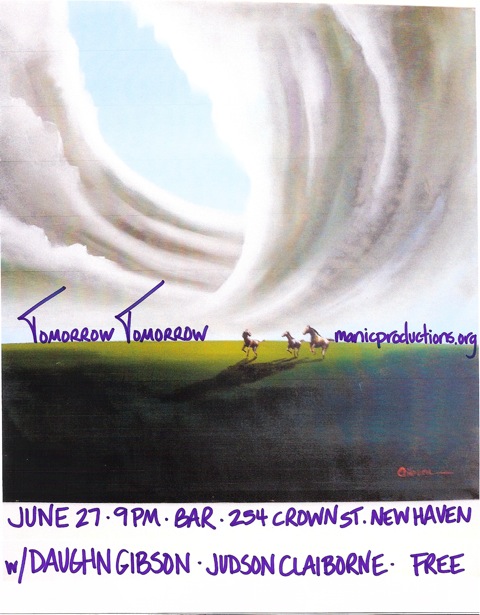 This Wednesday at BAR in New Haven CT I will be performing as part of Tomorrow Tomorrow, a new group organized around Meredith Dimenna. Tomorrow Tomorrow is the first full-length album that I’ve produced in my new spot Gold Coast Recorders and it is very exciting to be bringing it to life for the first time. Meredith is a truly gifted vocalist and the music is unique hybrid of raw country and psychedelic drone. TT is opening for Daughn Gibson, a fine singer who was been getting acclaim for his new record on the White Denim label. If you’re in the area, come on down; the show is free and Bar serves some of the best pizza in world too.
This Wednesday at BAR in New Haven CT I will be performing as part of Tomorrow Tomorrow, a new group organized around Meredith Dimenna. Tomorrow Tomorrow is the first full-length album that I’ve produced in my new spot Gold Coast Recorders and it is very exciting to be bringing it to life for the first time. Meredith is a truly gifted vocalist and the music is unique hybrid of raw country and psychedelic drone. TT is opening for Daughn Gibson, a fine singer who was been getting acclaim for his new record on the White Denim label. If you’re in the area, come on down; the show is free and Bar serves some of the best pizza in world too.